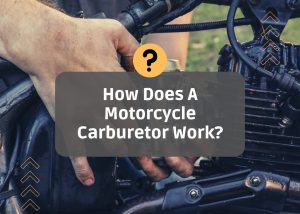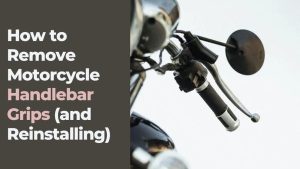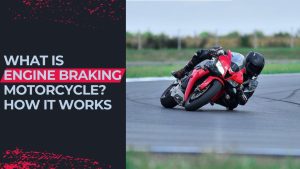KEY POINTS
- Feathering the clutch can lead to jerking sensations in old motorcycles or under certain conditions.
- Possible causes for jerking include low engine torque, combustion issues, rich fuel mixture, valve issues, ignition problems, and faulty carburetor.
- Solutions to try include adjusting valve clearances, correcting air-fuel ratio settings, increasing idle speed, checking for air leaks, getting a tune-up, and replacing faulty parts.
- Minor jerking when feathering the clutch in cold engines or at low speeds may be normal.
- Lower idle speed can lead to stalling while higher idle reduces power and fuel efficiency.
Are you experiencing a jerky sensation while feathering the clutch of your motorcycle at low speeds? You may be wondering if this is normal or if something is wrong with the bike. Well, it can happen in old motorcycles under some conditions.
I will discuss the potential causes for clutch jerking and the solutions you can try to rectify the issue. I will also answer some frequently asked questions about feathering the clutch and cold engine idling.
What Is Feathering the Clutch?
This term refers to partially engaging the clutch while riding without fully disengaging it. This technique can be useful for smooth shifting and maintaining control of the bike in certain situations.
However, if your motorcycle is jerking when you feather the clutch, it can be frustrating and potentially dangerous.
Possible Causes: Torque, Combustion, and More
Before we jump on our bikes and ride off to find a solution, let’s consider some possible causes for this problem.
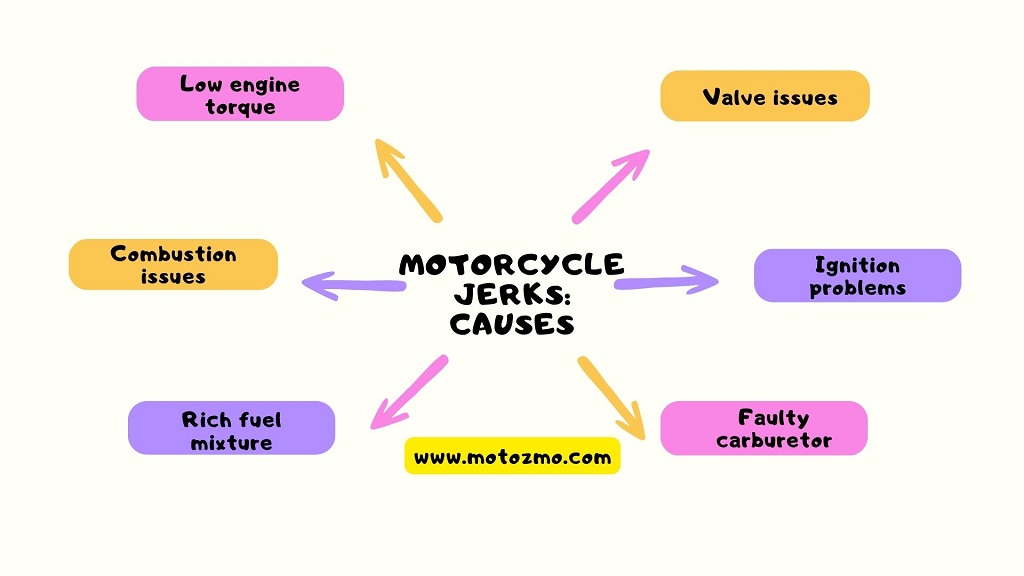
Low engine torque
At lower RPMs, the engine may not be producing enough power. As it struggles between power strokes, it can cause jerking. This is more prominent in high-displacement engines. Increasing the idle speed can help.
Combustion issues
An engine not running properly could be killing torque. This could be due to a number of factors, such as a plugged air filter, bad spark plugs, or issues with the ignition system.
Rich fuel mixture
A cold engine runs rich, meaning there is excess fuel in the mixture which doesn’t burn properly. The reasons for this could be insufficient air, bad fuel, and a leaking or an improperly set up carburetor.
The results of these issues are jerking and stumbling. Adjusting the air-fuel ratio and cleaning air filters can help.
Valve issues
If the valve clearances are not set properly, it can lead to uneven power delivery and jerking. Getting a valve adjustment done by a mechanic is the solution.
You May Like: 9 Easy Motorcycle Maintenance Basics Before Spring Riding
Ignition problems
Weak spark plugs or other ignition issues can cause the fuel not to ignite at the right time. Replacing spark plugs and ignition coils can fix this.
Faulty carburetor
In carbureted bikes, a malfunctioning carb can lead to jerking at low RPMs. Getting the carburetor tuned and the idle speed adjusted will rectify the problem.
The Solutions to Clutch Jerking
You can try these solutions to troubleshoot the problem of jerking during clutch feathering:
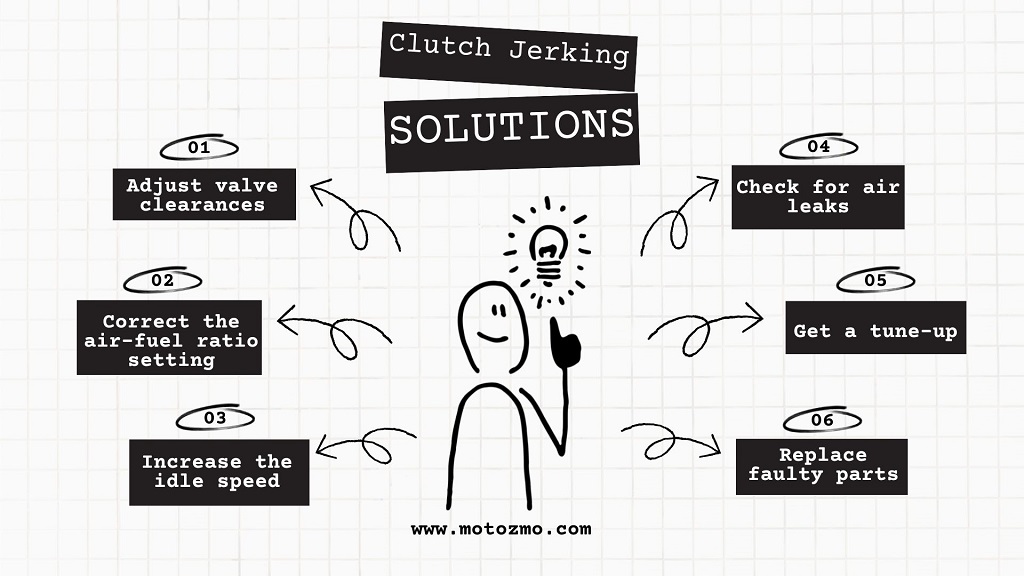
Adjust valve clearances
One solution suggested by a fellow rider is adjusting the valve clearances. This could help alleviate the issue, but it’s not guaranteed to work for everyone.
Valve clearance refers to the space between the rocker arm and the valve stem when the valve is fully closed. If the clearance is too tight or too loose, it can cause issues with engine performance.
Adjusting the valve clearances is a complex process that requires some mechanical knowledge and experience, so it’s not recommended for beginners.
Correct the air-fuel ratio setting
Correcting the air-fuel ratio settings involves adjusting the amount of air and fuel that enters the engine to ensure optimal performance.
A mechanic can help you with the settings, but it’s possible to DIY if you have some experience with carb settings.
Increase the idle speed
Increasing the idle speed to around 1,200-1,500 RPM (if it’s a big motorcycle) can help provide enough power to prevent jerking during feathering. For a smaller bike, it could be up to 1,000 RPM.
Check for air leaks
Air leaks in the intake manifold or vacuum hoses can lead to jerking. Inspect and seal any air leaks to improve performance.
You May Like: Say Goodbye to Carburetor Gunk with Carb Cleaners for Motorcycles
Get a tune-up
Getting a routine tune-up like adjusting valves, air filter cleaning, replacing spark plugs, and carburetor tuning can fix multiple issues and resolve jerking problems.
Replace faulty parts
If there are any damaged or malfunctioning parts like spark plugs, ignition coils, or carburetor, replacing them may be necessary to fix jerking issues.
Conclusion
If your bike is jerking when feathering the clutch, it’s not necessarily a major issue, but it’s worth investigating to determine the cause. By taking the time to investigate and address the issue, you can ensure a safe and enjoyable riding experience.
Frequently Asked Questions
Is jerking when feathering the clutch normal?
Minor jerking in cold engines or at very low speeds can be normal. But excessive or persistent jerking is usually a sign of an underlying issue that needs to be addressed.
What is the ideal idle speed for a motorcycle?
The ideal idle speed depends on the motorcycle make and model. But a good range is usually between 700 to 1,000 RPM. Lower idling may lead to stalling while higher idling reduces power and fuel efficiency.
Why does the jerking disappear when the engine is warm?
As the engine warms up, the idle speed increases automatically which provides more power to prevent jerking. The rich fuel mixture also leans out, and oil circulates better, all of which help reduce jerking tendencies.
How can I prevent my motorcycle from jerking when feathering the clutch?
Regular maintenance, including checking valve clearances, air-fuel ratios, and idle speeds, can help keep your motorcycle running smoothly and prevent jerkiness when feathering the clutch.
Can I fix the problem myself, or should I take my motorcycle to a mechanic?
While some adjustments, like valve clearances, can be done with a bit of DIY know-how, it’s often best to consult with a professional mechanic for more complex issues, especially if you don’t have experience with carb settings.


